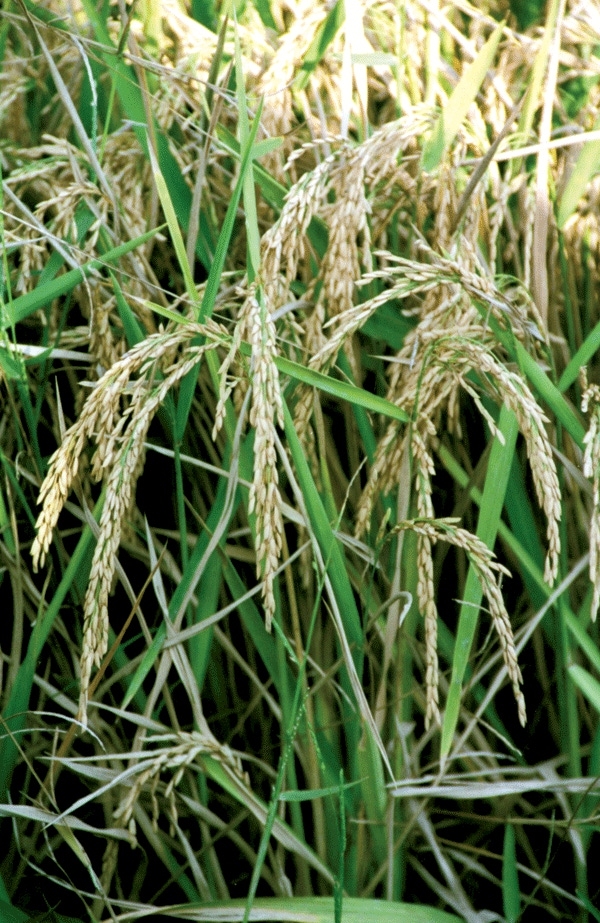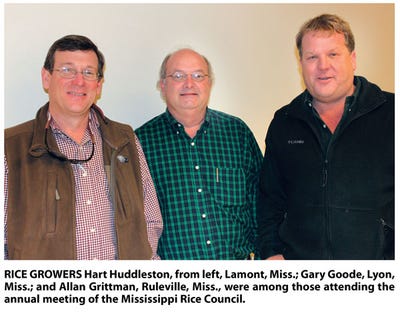
Promotions bring positive results for U.S. rice
While adverse weather during the 2010 growing season resulted in lower than normal milling yields for much of the southern rice crop, with increased challenges in marketing the rice, Dwight Roberts says the industry’s promotion efforts are continuing to see positive results, particularly in Mexico and Central America.

While adverse weather during the 2010 growing season resulted in lower than normal milling yields for much of the southern rice crop, with increased challenges in marketing the rice, Dwight Roberts says the industry’s promotion efforts are continuing to see positive results, particularly in Mexico and Central America.
“Mexico is our No. 1 market for long grain rice, and while consumption is increasing there, it is still relatively low for a nation of 110 million people,” says Roberts, president and chief executive officer of US Rice Producers Association, who spoke at the annual meeting of the Mississippi Rice Council at Cleveland, Miss.
“We had our first-ever National Rice Day promotion in Mexico last year, and were very pleased with the results for the various events and the coverage in the media. It was an excellent opportunity for us to get U.S. rice out in front of consumers.
 “The Mexican government, which is concerned that the country ranks No. 1 in childhood obesity, is looking at rice as a component of combating the problem. They are interested in making it a part of their school lunch programs.”
“The Mexican government, which is concerned that the country ranks No. 1 in childhood obesity, is looking at rice as a component of combating the problem. They are interested in making it a part of their school lunch programs.”
Under the Foreign Agricultural Service’s Global Broad-Based Initiatives program, funds are available for promoting rice in Mexico’s school lunch programs, Roberts notes, “and contributions by Mississippi rice producers have played a role in these promotion and marketing efforts.
“We are really excited about this program and the support of the Mexican government for U.S. rice.”
Western hemisphere demand for rice continues strong, he says, “but we continue to face challenges in dealing with the milling problems in last year’s crop.
“Also, a record crop is expected in South America’s Mercosur common market countries, with prices below those for U.S. rice. And Brazil has a new rice subsidy, which is currently being analyzed by the Foreign Agriculture Service.
“Venezuela, which was self-sufficient in rice just a few years ago, has now become a big wild card rice buyer, and is importing rice from Argentina.
Effort to open Cuba trade stalled
“Panama is tendering for purchases of the largest volume of rice in their history. The initiative to open up Cuba to U.S. trade appears to be stalled. Cuba was once one of the largest markets for U.S. rice, and we continue to work toward reestablishing trade with them.”
In the Mideast, Roberts says, “We have some good projects in Yemen, in cooperation with the U.S. State Department, and we’re seeing rice exports trickling upward.”
And he says, “We’re continuing our programs in China, which has much market potential as their population becomes more affluent and they turn more to imports of key commodities. Were China to have a major rice crop failure, they could use the entire production of U.S. rice in just 19 days.”
Roberts says U.S. agriculture faces “unique challenges” with the new Congress that has a membership that is 85 percent non-rural — including 35 new members who’ve never held office before.
“It’s imperative that we make a concentrated effort to educate them about the need for a protective safety net for agriculture and the need to continue to grow our export markets.
“The U.S. had a record $115 billion in exports last year, and agriculture continues to be one of the few sectors of the economy with a positive trade balance. We need to continue to make our case that Congress shouldn’t tinker with a sector that is so vital to our food and fiber security and that contributes so much to our economy.”
While the new chairman of the Senate Agriculture Committee, Debbie Stabenow, D-Mich., has a background in specialty crops and organics, Roberts says “She has made it known that she wants to better understand agriculture in the South and other areas of the country.”
About the Author(s)
You May Also Like



